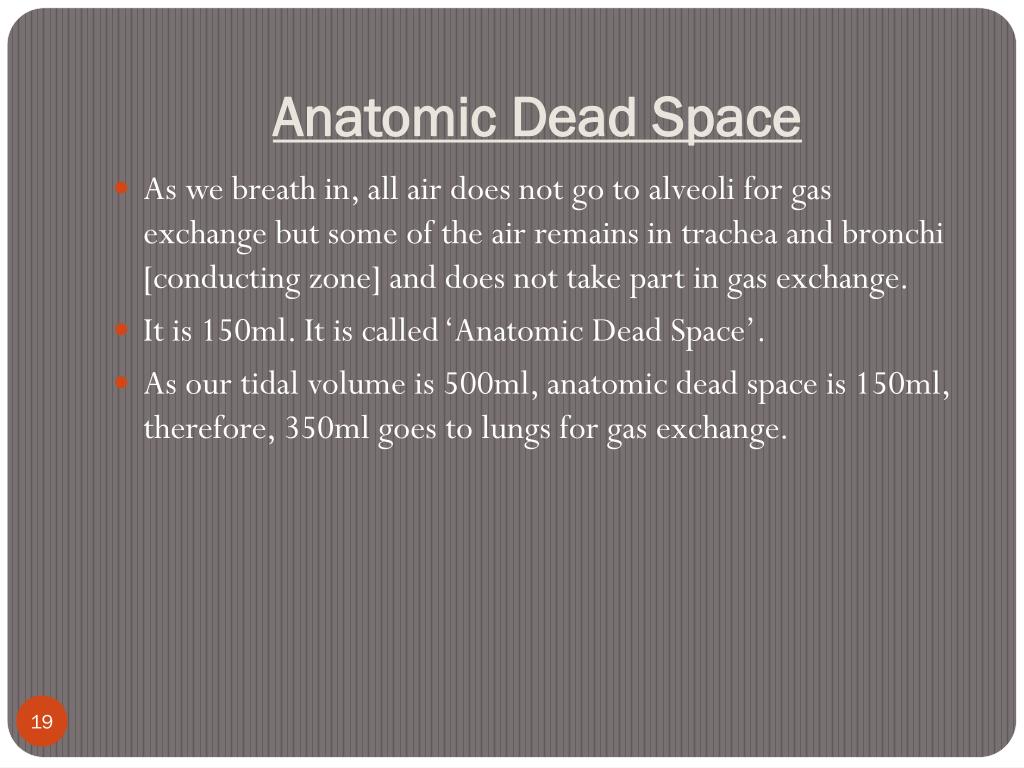
In pulmonary shunt, alveoli are perfused but not ventilated. Shunt is the opposite of dead space and consists of alveoli that are perfused, but not ventilated. What Is Pulmonary Shunt? Another contributor to ventilation perfusion mismatch is shunt. Meanwhile, physiological dead space is the sum of all parts of the tidal volume that does not participate in gas exchange. What’s the difference between anatomical and physiological dead space?Īnatomical dead space is the air-filled in conducting airways and does not participate in gas exchange. Physiologic dead space includes all the non-respiratory parts of the bronchial tree included in anatomic dead space, but also factors in alveoli which are well-ventilated but poorly perfused and are therefore less efficient at exchanging gas with the blood.

The normal value is in the range of 130 to 180 mL and depends on the size and posture of the subject. The anatomic dead space is the gas volume contained within the conducting airways.


 0 kommentar(er)
0 kommentar(er)
